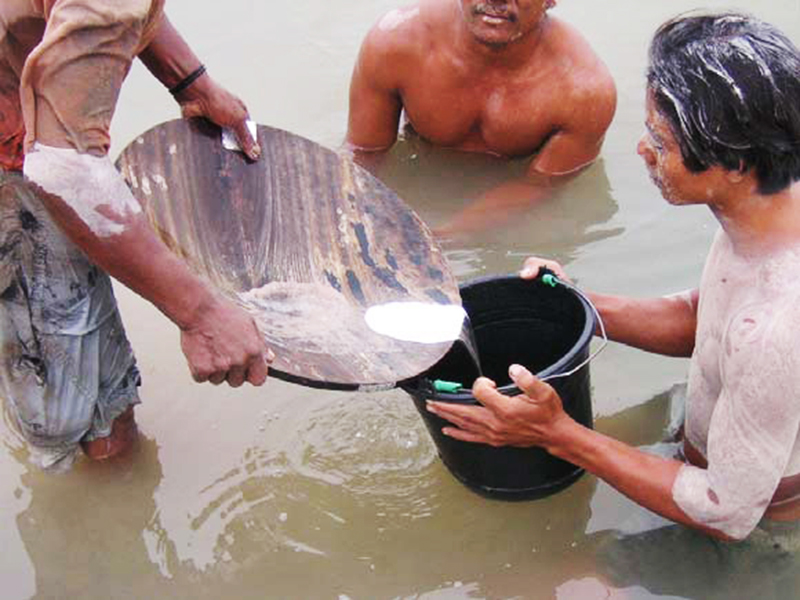By Mareike Kroll and Peter Rosenbluth
Background
Mercury is a highly toxic metal that persists in the environment. While the general population can be exposed to elemental mercury, for example in old mercury-containing thermometers, or to methylmercury in some fish, occupational exposure to toxic elemental mercury vapours in Artisanal and Small-scale Gold Mining (ASGM) is a much higher magnitude and very common among the estimated 10 million miners in the sector globally.
The artisanal gold mining sector is – due to its high use of mercury – a priority focus under the Minamata Convention on Mercury, an international legally binding agreement that protects human health and the environment from anthropogenic releases of mercury and its compounds. According to Article 7 of the Convention, parties with significant ASGM sectors are obligated to develop a National Action Plan (NAP) to reduce or eliminate the use of mercury in ASGM. The NAP should include strategies (e.g., the provision of information) to reduce the exposure of miners and their communities to mercury, especially of vulnerable populations such as children and women of child-bearing age. The NAP also includes requirements for the development of a Public Health Strategy (PHS). Suggested strategies include, inter alia, the gathering of health data for monitoring and evaluation, and training of health care workers to raise awareness through health facilities on the health risks associated with mercury, but also to improve their diagnostic and treatment capacity.


